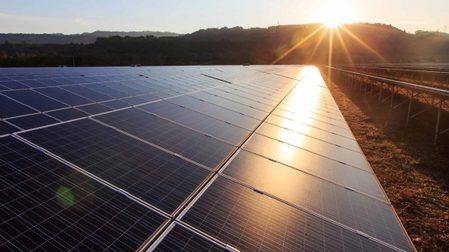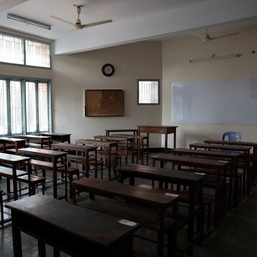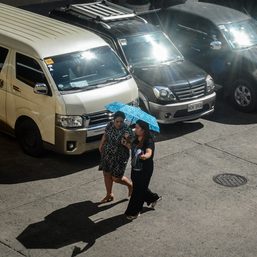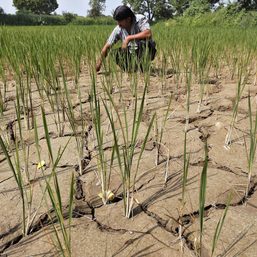SUMMARY
This is AI generated summarization, which may have errors. For context, always refer to the full article.
![[OPINION] The Philippines’ decades-long tug-of-war between coal and renewables](https://www.rappler.com/tachyon/2023/08/commit-net-zero-climate-action-august-30-2023.jpg)
Why does the Philippines lag in generating renewable energy today when they were one of the leaders two decades ago?
In the early 2000s, the Philippines appeared to be one of the leaders of renewable energy in Southeast Asia. By 2005, renewable energy’s contribution to the Philippines’ energy mix was 32.5%, while coal was 25.2%. Fast forward 15 years and two Presidents later, the situation has apparently reversed. In 2020, renewable energy’s share was reduced to 29.2% while coal increased to 43.8%. Despite the rapid advancement of Philippine laws, such as the Biofuels Act of 2006, the Feed-in Tariff Renewable Energy Act of 2008, and the Philippine Energy Plan 2018-2040, coal has no doubt won the last 20 years.
Currently, there are 28 coal-fired power plants in the country with total installed capacity of 9.88 gigawatts. In November 2020, the Philippine government declared a moratorium on coal-fired power plants. However, this moratorium does not affect coal-fired powerplants that have been already approved by the government. Indeed, the Philippines has approved the construction of 22 more coal-fired power plants, projecting to increase coal’s contribution to the country’s energy mix to 53% by 2030.
A combination of policies that privilege coal, rapid economic growth, and business elites seeking profits above all else explain coal’s victory.
Coal strikes back: Duterte’s coal preference
Coal made significant progress during the Benigno Aquino III (2010-2016) administration. President Aquino was committed to increasing the generation of renewable energy. However, he also governed the first six years of rapid economic growth in the Philippines. Between 2010 and 2019, the Philippine economy grew at a rate of 6-7%. Between 2010 and 2020, the Philippine economy doubled in size, jumping from $204 to $404 billion. Philippine economic growth meant that pressure and opportunity to increase energy supply immense.
Coal made even greater strides during Rodrigo Duterte’s administration (2016-2022). President Aquino III signed the landmark 2015 Paris Agreement to reduce coal fired power plants in the country, but President Duterte reversed this, stating, “I did not sign it…my predecessor signed it…. [The Paris Agreement] will hamper the country’s industrialization agenda.” Duterte took an “energy-neutral stance,” setting aside carbon emissions reduction goals. This meant that while Duterte’s government allocated subsidies for renewable energy, his regime prioritized coal power plants.
Duterte prioritized the extension of his family’s political fortunes, which meant preventing business elites from funding the opposition. This meant prioritizing and forwarding the interests of these business elites in government. As a result, the wealthiest business elites and their commercial interests in building coal power plants were even more prioritized by the Duterte government than the Aquino III government. Specifically, the Ayalas, the Consunjis, the Angs, Villars, the Aboitizes, and many other business elites own and operate coal power plants across the country.
The Philippine regulatory regime allows an automatic pass-through clause of their fuel costs, which means that the coal power producer and the distributor could pass on increases in global energy prices to the consumers. Since consumers will bear the burden in regardless of the situation, coal power plants were lucrative construction projects for business elites. These conditions were amplified by the Duterte administration’s announcement to make energy national priority projects, expediting the procedures to build coal power plants, and waiving local taxes or fees. In 2018, the Philippine Department of Energy declared energy projects as priority national projects, which expedited the construction process and exempted them from various fees and taxes. While renewable energy projects could have benefited from this regulation, coal projects benefited more.
As such, business elites began building new coal power plants across the country with the help of international banks and equity firms. Among these investors and financiers, UK bank Standard Chartered provided $4.81 billion to construct the Limay power plant, which was built by Ramon Ang’s San Miguel. BlackRock, an investment management and services firm, has financed $2.6-billion worth of equity and financing to Philippine companies. Norway’s sovereign wealth fund, which is managed by Norges bank, holds $278-million worth of equity in five Philippine coal power companies.
Overall, between 2018 and 2020, the government approved 149 energy-related national priority projects, which is projected at $14.1 billion. While these projects are located across different domains of the energy sector, some of these comprise major coal-fired power plants, such as the 500-MW Supercritical San Buenaventura Power facility in Mauban, the Tangkawayan (1000 MW), Atimonan (1200 MW), and the Ibabang power stations (600 MW). Many of these energy projects were part of Duterte’s Build! Build! Build!. Duterte also envisioned these energy projects to support his non-energy infrastructure projects.
Return of the renewables: Marcos’ foreign investment strategy
The current Marcos administration stands at the cusp of reviving the renewable energy sector. President Marcos has reversed the rhetoric of Duterte, arguing that the Philippines should promote indigenous sources of renewable energy. In Marcos’ recent State of the Nation Address, he said that the “government is aggressively promoting renewable, so that it provides a 35% share in the power mix by 2030, and then on to 50% by 2040.” This announcement came despite the criticism of the Power for People Coalition, a group of civil society actors, people’s organizations, and consumers, of Marcos’ lack of drive towards clean energy.
Rather than acquire development finance or commercial loans to build energy projects, the strategy of the Marcos administration focuses on opening energy projects to foreign ownership. In National Economic Development of Authority Release, there are 194 flagship infrastructure projects, which are funded by a mix of multinational development banks, bilateral financing, and local Philippine banks. However, only 2 of these 194 projects belong to the energy sector.
As such, the Philippine strategy appears to an aggressive opening of the energy sector to foreign investors. In November 2022, the Philippine government passed the Circular No. 2022-11-0034, which opened the country’s solar, wind, hydro, and ocean or tidal energy resources to foreign ownership. While Marcos has aggressively courted foreign investors in Singapore, Japan, and the United States, this policy has alarmed business elites to move into renewable sector otherwise lose to outside competition. Indeed, some business elites have shifted from coal to renewable energy. Philippine conglomerates the Lopez and Aboitizes have committed $1 billion to clean energy. AC Energy, which is owned by the Ayala family, has begun the construction of the $293 million Palauig 2 project, the $137 million 160 MW Pagudpud Wind Project, and the $137 million 283 MW San Marcelino Solar Power project.
All these projects are projected to bear fruit in the country. The Global Energy Monitor shows that the Philippines has the largest renewable energy pipeline in Southeast Asia. If all the projects are completed, the Philippines is projected to add 17,809 MW of solar capacity and 7,856 MW of wind power by 2030. The added capacity means that the Philippines is set to be one of the renewable energy leaders in Southeast Asia.
Chinese investments can tip the scales to renewables
Despite Marcos commitment to renewables, his renewal of the 15-year lease of the Malampaya gas field, a deep-water gas-condensate reservoir owned and operated by a joint venture of Philippine and Western firms, illustrates the entrenched influence of coal and fossil fuels. This renewal has allowed operators to drill new wells. This renewal is no surprise as other powerful business elites own stakes in the Malampaya gas field, such as the Razon family, which owns 45%. Malampaya also provides gas to four energy power plants in the island of Luzon, which are owned by Philippines business elites.
One way for Marcos to tip the scales back to renewables is to invite Chinese firms to invest in the Philippine renewable energy sector. In January 2023, nine Chinese firms have pledged $14 billion worth of direct investments to the Philippine renewable energy sector, comprising five hydropower plants, two wind farms, and one solar power project. These eight projects have been approved by the Philippine government, which means that subsequent steps on planning, construction, and operations will follow. One project is under pre-development phase, which means it is undergoing feasibility studies.
The participation of Chinese firms will surely increase the country’s renewable energy mix. However, there are two potential issues that might follow. First, the spiraling geopolitical tensions between the Philippines and China mean that any major conflagration may affect these projects. While Chinese firms have the autonomy to decide and China treats exporting commercial activities as one of its foreign policies, the tense environment in the South China Sea may get in the way. Other actors in the region, such as Japan, the United States, Australia, and South Korea, will aggravate the existing situation.
The second problem is that Philippine domestic politics get in the way. China’s Belt and Road Initiative projects in the Philippines, which increased during Rodrigo Duterte’s term, is under political scrutiny. The Philippine Senate is reviewing or have canceled the six BRI projects. The Chico River Dam Irrigation project and the New Centennial Dam, which were either inaugurated or have made substantial progress, will likely continue due to the high cost of cancellation. The three railway projects, which were awarded to China in 2019, were canceled due to the unwillingness of Chinese firms to operate and the inability of the Philippine government to provide guarantees. Duterte’s own officials recommended the cancellation of the Philippine Safe project, a $400-million loan for closed-circuit television.
In sum, the Philippines’ energy situation has been caught in the tug-of-war between coal and renewables. Chinese direct investments in renewables may be the catalyst that the Philippines needs to chart a sustainable path away from fossil fuels and into renewable energy. Both the Philippines and China should ideally continue these renewable energy ventures despite ongoing geopolitical tensions. – Rappler.com
Alvin Camba is a a faculty affiliate at the Fletcher School’s Climate Policy Lab at Tufts University and an assistant professor at the Josef Korbel School of International Studies at the University of Denver. More information about his work can be found on his website (alvincamba.com).
Add a comment
How does this make you feel?




![[OPINION] In a changing climate, how do we ensure safety and health at work?](https://www.rappler.com/tachyon/2024/04/Climate-change-safety-workers-April-25-2024.jpg?resize=257%2C257&crop_strategy=attention)

There are no comments yet. Add your comment to start the conversation.